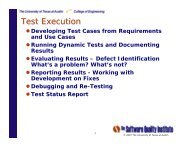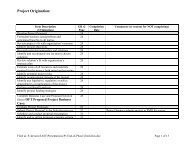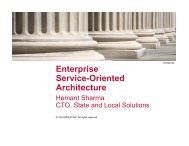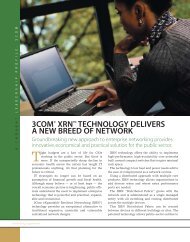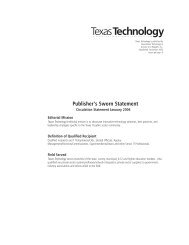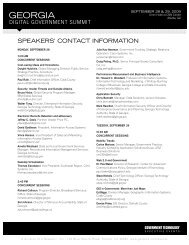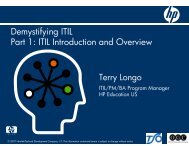Unify Your Backup and Recovery Strategy with LiteSpeed® for SQL ...
Unify Your Backup and Recovery Strategy with LiteSpeed® for SQL ...
Unify Your Backup and Recovery Strategy with LiteSpeed® for SQL ...
You also want an ePaper? Increase the reach of your titles
YUMPU automatically turns print PDFs into web optimized ePapers that Google loves.
<strong>Unify</strong> <strong>Your</strong> <strong>Backup</strong> <strong>and</strong> <strong>Recovery</strong> <strong>Strategy</strong> <strong>with</strong> <strong>LiteSpeed®</strong><br />
<strong>for</strong> <strong>SQL</strong> Server <strong>and</strong> <strong>LiteSpeed®</strong> Engine <strong>for</strong> Oracle<br />
LiteSpeed Advantages<br />
LiteSpeed provides consistent compression <strong>and</strong> encryption <strong>for</strong> <strong>SQL</strong> Server <strong>and</strong><br />
Oracle, along <strong>with</strong> efficiency:<br />
6<br />
• Compression. LiteSpeed uses the same compression engine on both the<br />
Oracle <strong>and</strong> <strong>SQL</strong> Server plat<strong>for</strong>m, so the compression ratio <strong>for</strong> like data is<br />
reliably similar on both databases.<br />
• Encryption. LiteSpeed provides encryption <strong>for</strong> both <strong>SQL</strong> Server <strong>and</strong><br />
Oracle. No matter what st<strong>and</strong>ard you adopt in your shop, encryption can<br />
be consistently applied across both database plat<strong>for</strong>ms.<br />
• Efficiency. LiteSpeed per<strong>for</strong>ms backup compression on the database<br />
server, in memory, be<strong>for</strong>e the backup is written to disk or shipped across<br />
the network to a tape system. All other methods require more storage<br />
<strong>and</strong>/or greater network utilization because the compression occurs after<br />
the backup is created.<br />
Encryption Levels<br />
LiteSpeed offers the following encryption levels:<br />
• AES128 (Advanced Encryption St<strong>and</strong>ard, 128-bit)<br />
The most commonly used encryption cipher <strong>for</strong> software implementations.<br />
The ‘128’ indicates that a 128-bit key is used. This is strong enough <strong>for</strong> the<br />
US government to use <strong>for</strong> in<strong>for</strong>mation classified as SECRET.<br />
• AES192 (Advanced Encryption St<strong>and</strong>ard, 192-bit)<br />
• AES256 (Advanced Encryption St<strong>and</strong>ard, 256-bit)<br />
The same ciphers but <strong>with</strong> longer keys. Certified by the US government <strong>for</strong><br />
use <strong>with</strong> in<strong>for</strong>mation classified as TOP SECRET.<br />
• 3DES (Triple Data Encryption St<strong>and</strong>ard)<br />
Seems to be falling out of use in favor of AES. Widely thought to be less<br />
secure than AES.<br />
• LiteSpeed <strong>for</strong> <strong>SQL</strong> Server supports some additional proprietary encryption<br />
levels (RC2 <strong>and</strong> RC4).



